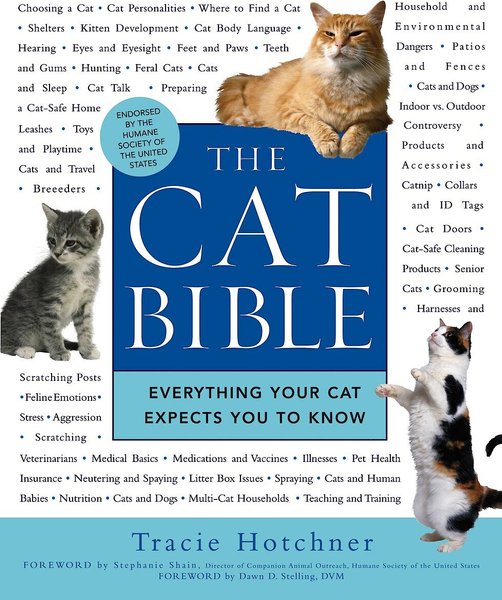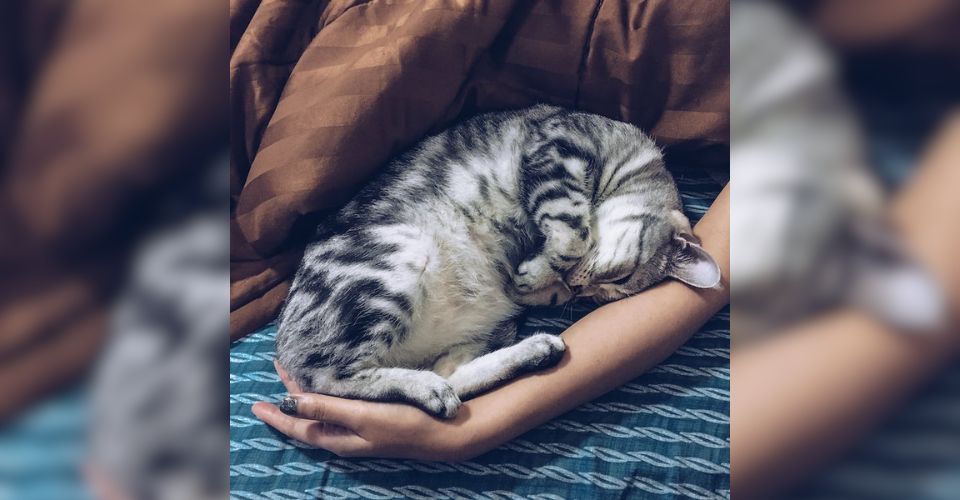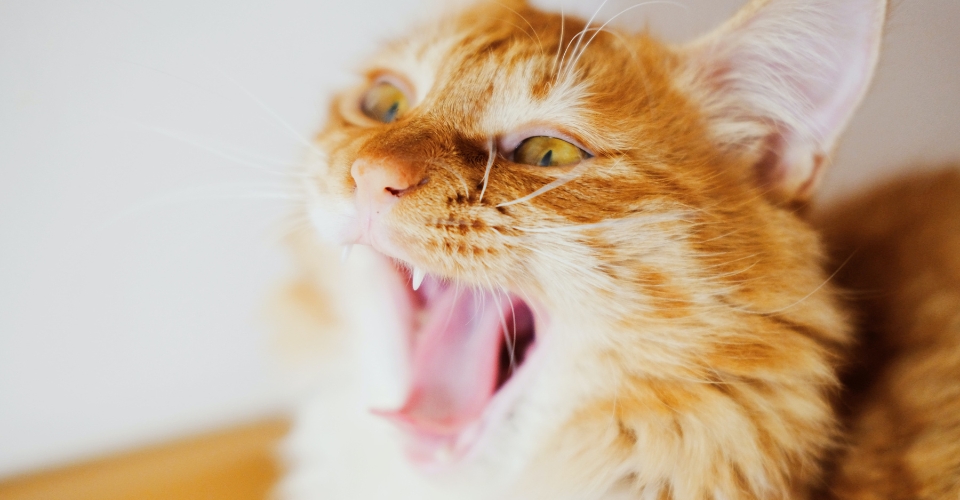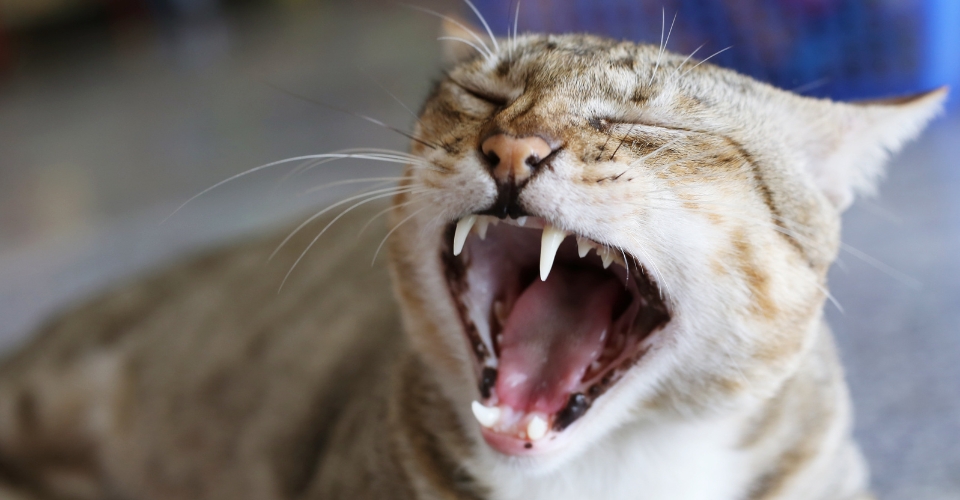Cats are smart species, ready to take charge shall the need arise and communicate their feelings effectively. But despite our earnest efforts to get to know our much-loved pets, often we find ourselves scratching our heads in our attempt to decode their peculiar ways. Take, for instance, some of their forms of body language. Like, why do cat tails puff up sometimes? What do cat purring and cat hissing mean? What does your cat wagging her tail tell you? And how exactly do we help them, considering that the rest of the body language does not necessarily mirror the one we are familiar with?
Why Do Cat Tails Puff Up?
Cats express themselves, among other things, with their tails. And a cat with a puffed-up tail, the shape of a bottle brush, is first and foremost in a state of heightened tension, and a few different but closely related things could be deduced from it.
If it involves the cat’s back curved in an arch and all hairs on the skin standing up, forming a discernible line on the spine, the cat is spooked.
Change the posture a bit, with all the fur on the feline standing on its edge, making the cat appear a size or two larger than it really is, and you find a cat driven mad to the point of a rowdy brawl, ready to pounce. Conversely, it could also suggest a frightened feline, using fierce body language as a means to camouflage its fear and attempt to intimidate its opponent.
Causes of a Puffed-Up Cat Tail
Fear
Pretty much like humans get goosebumps, cats too experience piloerection, hair raising on end, when faced with something terrifying or startled by a sudden unexpected movement. Considering the feline spine is far more flexible than the human one, it isn’t surprising that the shock throws her back to stretch at its maximum capacity forming a curve. The skin muscles constrict, pushing the hair strands outward, giving it a fluffed look.

The dramatic effect thus created not only conceals the inner fright of the animal but also manages, in many cases, to hold off any intruder or possible attacker from pursuing it. Notice that the cat will hold its tail straight in a scenario like this.
Aggression
Another possible explanation, albeit with a slightly different body language, is that of a display of anger. When confronted with a foe or someone the cat has taken an unfortunate disliking to, your pet is likely to rage into an exaggerated, fluffed-up ball of fur, holding her tail up. In certain cases, she would even lower her hindlimbs and hurl threatening hisses at the opponent.
This is a different expression than the scared one, where there is no arched back, the ears are folded in, and the opponent feasted to a fiery staring and hissing match. If not backed off, the feline may proceed to attack in this case.
Playfulness
Now, this might sound a little odd, but a cat may puff up its tail when engaged in a thrilling game of chase or another exciting activity it is particularly fond of. Born a predator, the feline expressions of excitement resemble closely the ones involving chasing prey or attacking.
But it is not hard to guess that your pet is excited when you look a bit closer. A playful cat exudes joy with a relaxed body posture, unlike an angry one whose entire body is taut with tension.
Other Causes of a Puffed-Up Tail
Some of the other reasons a cat may display a ruffled tail include:
Cold
When cold, cats recall their natural defense mechanism to retain their bodily heat with piloerection, puffing not just the tail but the rest of the body’s fur.
Anxiety
A stressed feline is very much likely to show her feelings with a fluffed tail, accompanied by a few other signs.
Arousal
The cat’s tail may get all puffed up when it is feeling sexual arousal.
Wariness
If you get a fluffed-up, raised tail after attempting to pet a feline, it is an obvious indication that the touch was not appreciated, and you need to back off.
Understanding Causes of a Puffed-Up Cat Tail with Body Language
Felines communicate in a number of different ways, and puffing up the tails is just one of them. They rely on a variety of different forms of vocalizations, expressions, and bodily movements to relay their feelings, ask for food, be pet, or seek your undivided attention. If she comes to you and tries to sleep between your legs, it is her way of showing affection. Similarly, if she groans in her sleep, she might be in pain.
Given that there are so many things our cats want to tell us, it is better to get to know all. Here is the Cat Bible, a book endorsed by the Humane Society of the United States and discusses everything your cat expects you to know.
|
|
Below we go over some of the other factors you need to take into account before identifying how best to help your tiny pal.
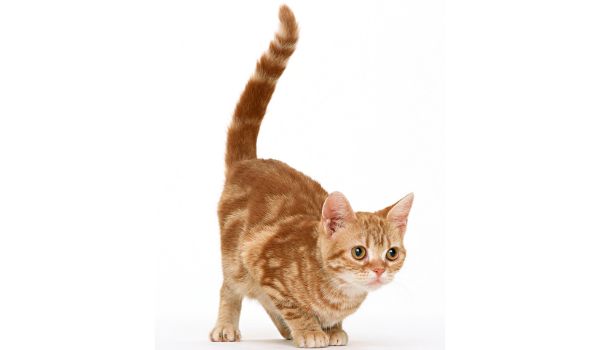
Ear Movements
Let us not forget that cats are a predatory species and rely heavily on their senses to detect danger. No wonder their tiny tools of assessment, ears, in this case, have a role to play when it comes to communicating what they feel.
If the ears are flattened to the sides of the head, it could be scared, nervous, or facing a bout of anxiety. A feline twitching its ears indicates severe agitation and building up anger. Quickly shifting her ears helps her collect sounds from all directions and assess the situation accordingly. An angry cat would have her ears pushed back.
Body Language
While cats do not necessarily show a lot of facial expressions, you could still read their entire body language to assess what exactly is going on. The kitty crouched lower on the ground, eyes screwed to narrow slits, and tensed body indicates it is ready to pounce on someone.
As we are discussing “why do cat tails puff up,” it would be wise to revisit one of our earlier explanations, the one involving a straight, puffed-up tail and fur and an arched back. That is another expression of an aggressive feline and would involve a highly focused gaze.
When you notice a cat with dilated pupils, a rigid body, and a fluffed tail held between the legs, it shows that it fears something and may need the removal of the source of this distress to go back to normalcy.
Conversely, a playful cat would be more relaxed, possibly with alert ears and a relaxed expression in their eyes.
Vocalization
This one is pretty straightforward, even if you feel like you do not understand it. So many feline communication will involve some form of vocalization. If your cat is happily enjoying some quality time with you, they may make a simple meowing sound. A kitty putting up a brave face in an unwanted scenario may growl, and the one about to lunge at its opponent is likely to make hissing, growling, and even yowling sounds.
What to Do When Cat Tails Puff Up?
Begin by carefully noticing their circumstances and their body language. If it is being disturbed or annoyed by something, remove the source of distress and leave it alone. Give them the space to recover, and only approach once they indicate a willingness.
If you notice aggression, be very firm with the cat. Tell it to back off in a clear, loud voice and remove yourself from the situation. Pressuring it in such a situation will be like egging it on for violence.
Final Word: Why Do Cat Tails Puff Up?
Cat tails puff up to indicate the feelings of fear & distress, anxiety, aggression, and even playfulness. These feelings can be differentiated by looking closely at their body language. A puffed tail held straight displays anxiousness; held between the legs indicates fear, and if it is straight, it means the cat is aggressive.


